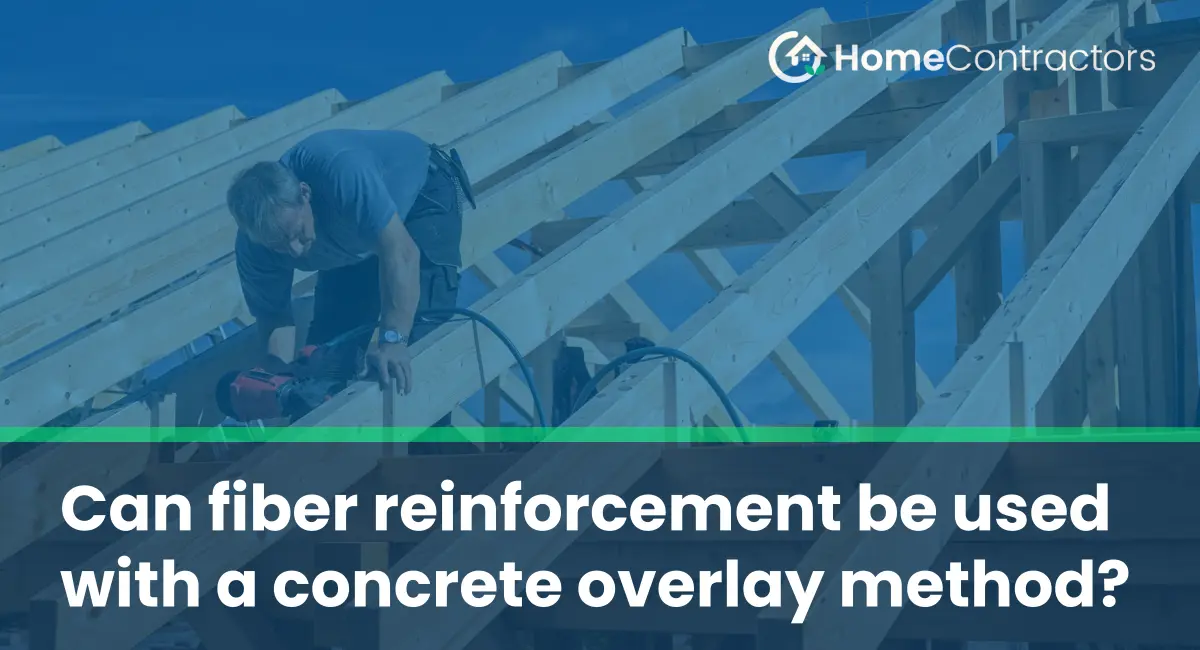Concrete overlays are a popular solution for repairing and enhancing worn-out or damaged concrete surfaces. They are thin layers of new concrete that are applied on top of existing slabs to improve their appearance, strength, and durability. However, some people may wonder if fiber reinforcement can be used with the concrete overlay method to further enhance its performance. In this article, we will explore the potential benefits of incorporating fiber reinforcement into concrete overlays and examine whether it is a viable option.
Understanding Fiber Reinforcement
Fiber reinforcement involves the addition of small, uniformly distributed fibers to concrete to enhance its properties. These fibers, typically made from materials such as glass, steel, or synthetic polymers, provide added strength, improved crack resistance, and enhanced durability. Fiber reinforcement can be particularly useful in situations where concrete is subjected to heavy loads, temperature fluctuations, or other external stresses.
The Concrete Overlay Method
Before delving into whether fiber reinforcement can be used with the concrete overlay method, let’s first understand the overlay process itself. A concrete overlay involves the application of a thin layer of fresh concrete over an existing concrete surface. This overlay can be used for various purposes, such as repairing cracks, improving aesthetics, or increasing the load-carrying capacity of the existing slab.
The Advantages of Fiber Reinforcement in Concrete Overlays
- Enhanced strength and durability: Incorporating fiber reinforcement into a concrete overlay can significantly enhance its strength and durability. The fibers act as a reinforcement system, distributing the forces exerted on the overlay more evenly, thereby reducing cracking and increasing load-bearing capacity.
- Crack resistance: One of the main advantages of fiber reinforcement is its ability to improve crack resistance. Cracks can develop in concrete overlays due to drying shrinkage, thermal expansion and contraction, or external loads. By adding fibers, the chances of crack formation and propagation can be greatly reduced, resulting in a more long-lasting and resilient overlay.
- Reduced maintenance: Fiber-reinforced concrete overlays are known for their increased resistance to wear, abrasion, and impact. This added durability can lead to reduced maintenance requirements and ultimately result in cost savings over the life of the overlay.
Considerations when Using Fiber Reinforcement with Concrete Overlays
While fiber reinforcement offers numerous advantages, there are some important considerations to keep in mind when using it in conjunction with concrete overlays:
- Fiber type and dosage: The choice of fiber type and dosage is crucial to ensure optimal performance of the concrete overlay. Factors such as the specific application, desired properties, and project requirements must be considered when selecting the appropriate fiber type and determining the right dosage.
- Mixing and application: Proper mixing and application techniques are essential for achieving uniform distribution of fibers in the concrete overlay. It is important to follow manufacturer guidelines and ensure thorough mixing to avoid fiber clumping or inadequate dispersion.
- Bonding between layers: Ensuring strong bonding between the existing concrete surface and the overlay is crucial for the long-term performance of the system. Incorporating fibers into the overlay might affect the bonding characteristics, so proper surface preparation and application techniques must be implemented to achieve a strong bond.
Incorporating fiber reinforcement into a concrete overlay can offer significant benefits in terms of strength, durability, and crack resistance. By distributing forces more evenly and reducing crack formation, fiber-reinforced overlays can provide longer-lasting and more resilient surfaces. However, careful consideration must be given to factors such as fiber type, dosage, mixing, and bonding to ensure optimal performance. Consulting with experts and following industry best practices is essential when using fiber reinforcement with the concrete overlay method to achieve the desired results.
